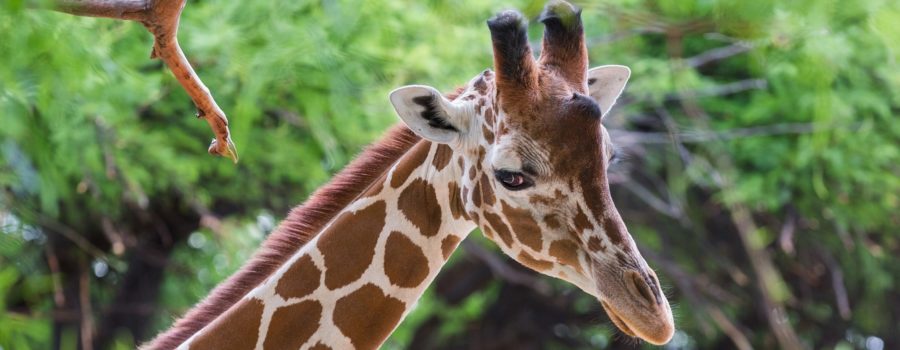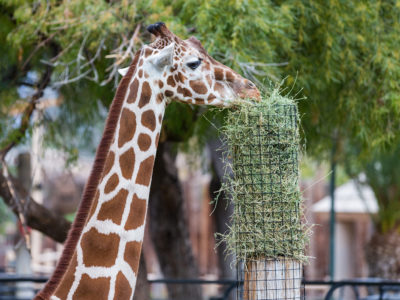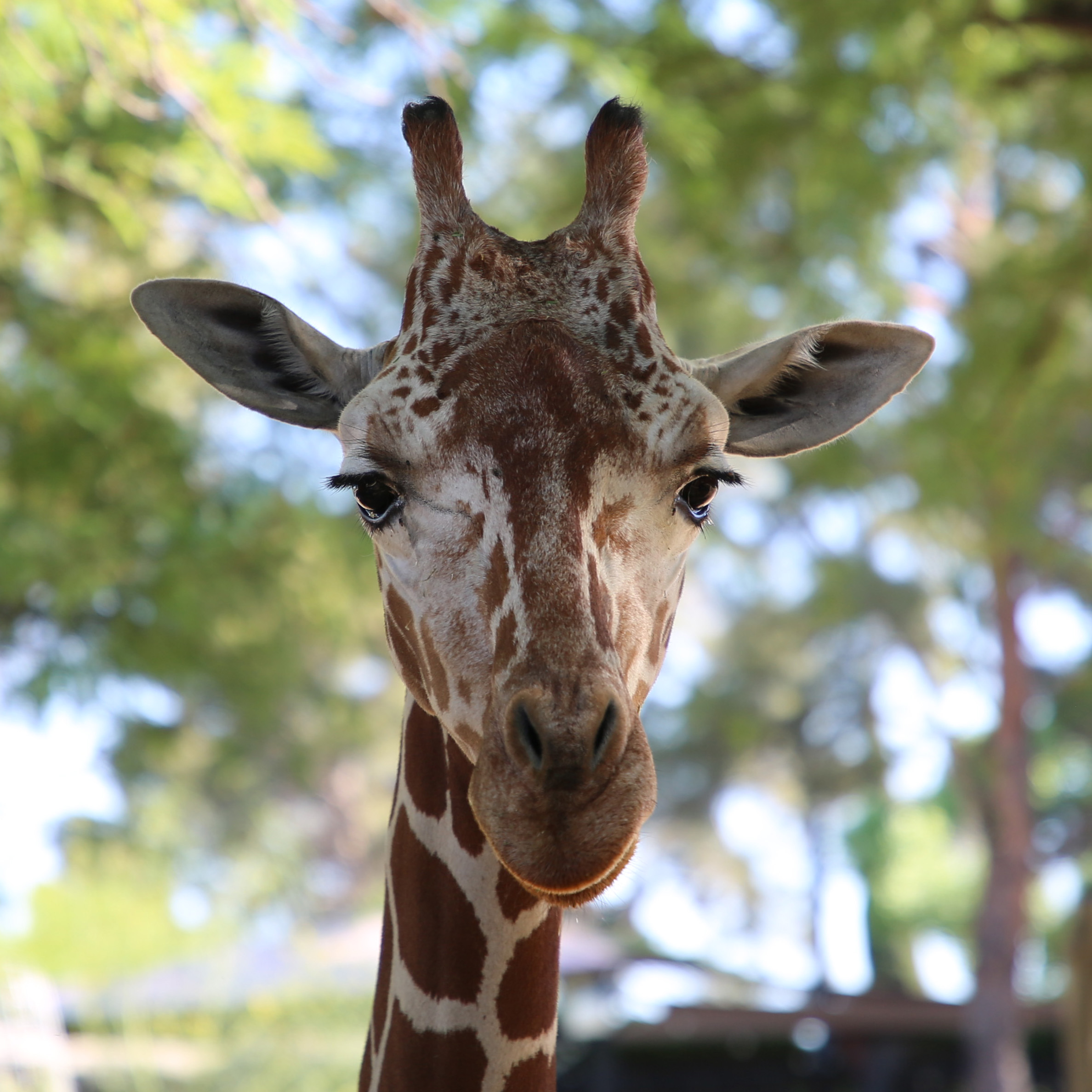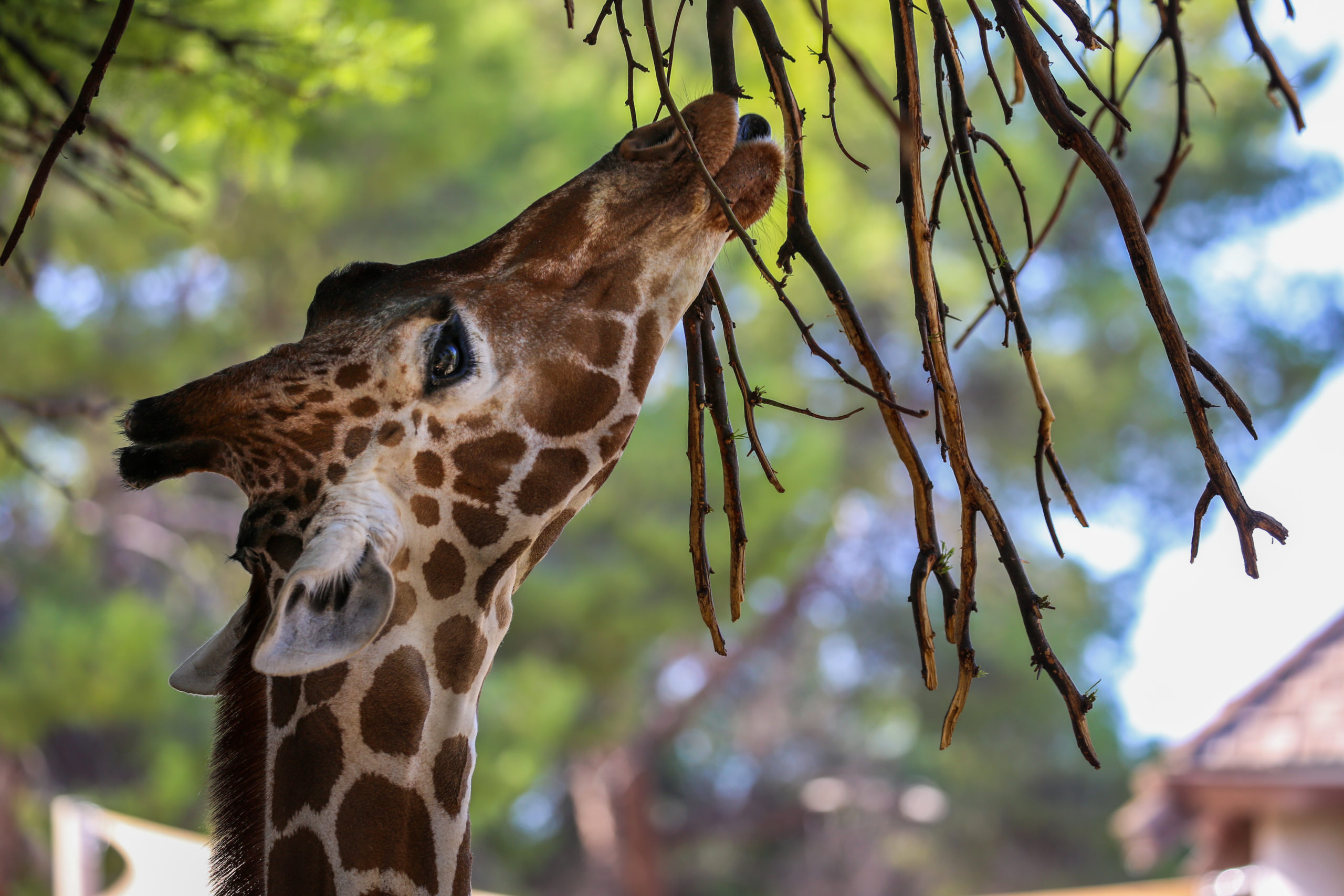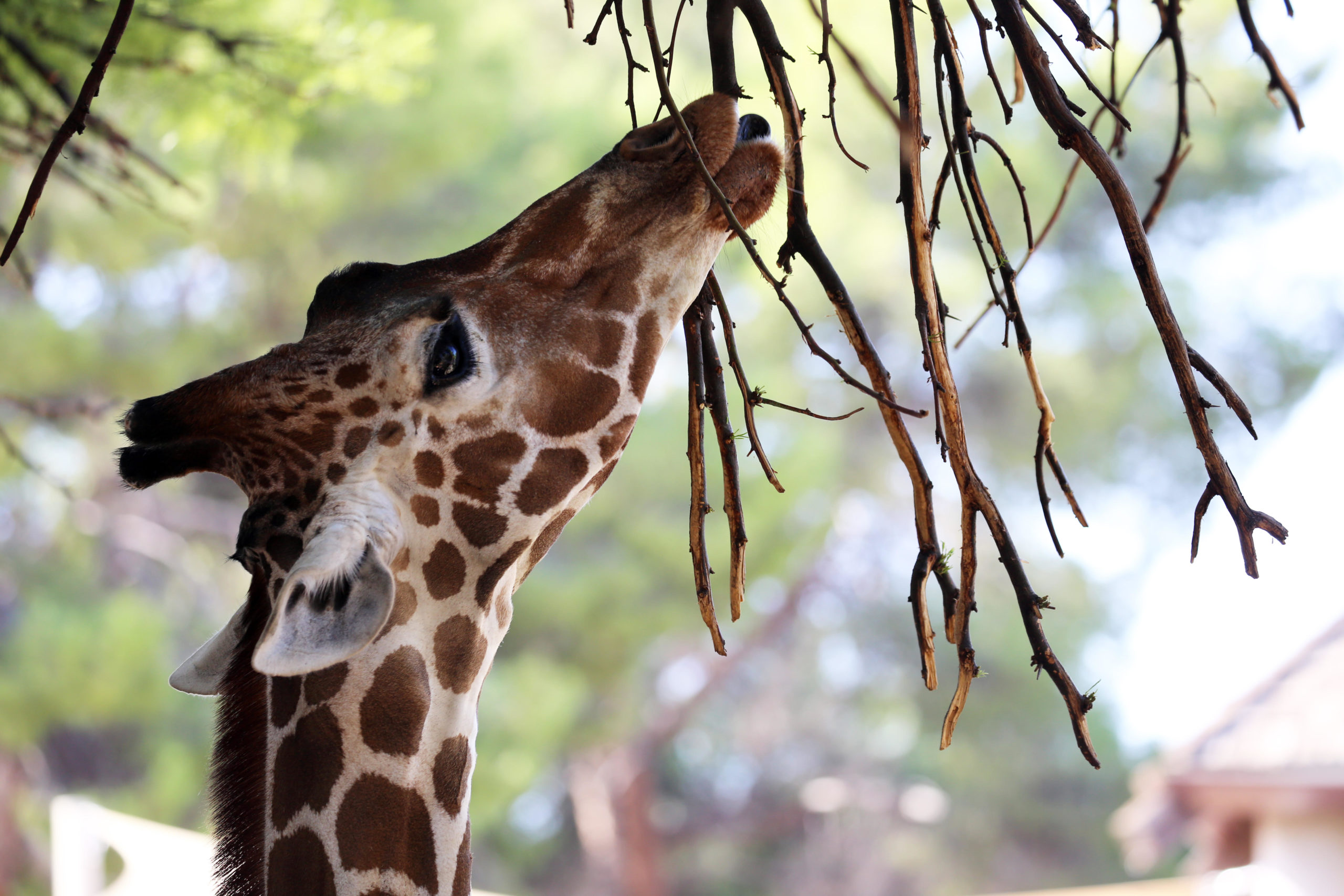Giraffes are the tallest land mammal with long necks and legs. Their necks have 7 vertebrae like most mammals and are linked with ball and socket joints allowing for increased flexibility. Giraffes also have two horn-like structures covered in skin on the tops of their heads, called ossicones, which are used by males to compete for females. Subspecies of giraffes vary in patterns, but all are typically cream colored with darker brown patches aiding in camouflage.
Diet: Giraffes are herbivorous, feeding on the leaves, fruits, flowers and stems of trees that other African animals are too short to reach. They use their 18 inch, prehensile tongue to eat up to 75 pounds of more than 100 different plant species each day. Giraffe are also ruminants, and will regurgitate food in order to re-chew and digest tough vegetation. Typically, giraffes obtain most of their water from their diet, but can be seen drinking water every 2 or 3 days if it is available.
In the Wild: Giraffes are not territorial and will form loose herds with no permanent members. Newborn calves are able to stand within 20 minutes of birth, and will nurse for one year. Young calves are often prey for carnivores such as lions, hyenas, African wild dogs, and leopards, and female giraffes often stand over their calves to protect them. Male calves will typically leave their herd at three years of age and can form bachelor herds while female giraffes typically remain close by for life. Other herbivores like wildebeest and zebra can also be seen in close proximity to giraffes. As the “watchtowers of the savanna”, the giraffe’s long necks and large eyes provide them with more opportunity to spot predators.
Conservation issues/actions: Increased human population and expansion, habitat destruction for farming, and increased droughts pose some of the most significant threats to giraffe populations as they result is more frequent human/wildlife conflicts. Additionally, giraffes are sometimes hunted for their meat and hides, and their tails are often taken and used as fly swatters as well as good luck symbols.
At the Zoo:
The giraffes at Reid Park Zoo are the reticulated subspecies which are predominantly found in Kenya, and are distinguished by their large, chestnut colored patches outlined by thin white lines.
When you visit the Giraffe Encounter, you help raise thousands of dollars for field research and conservation projects every year. Thanks!

